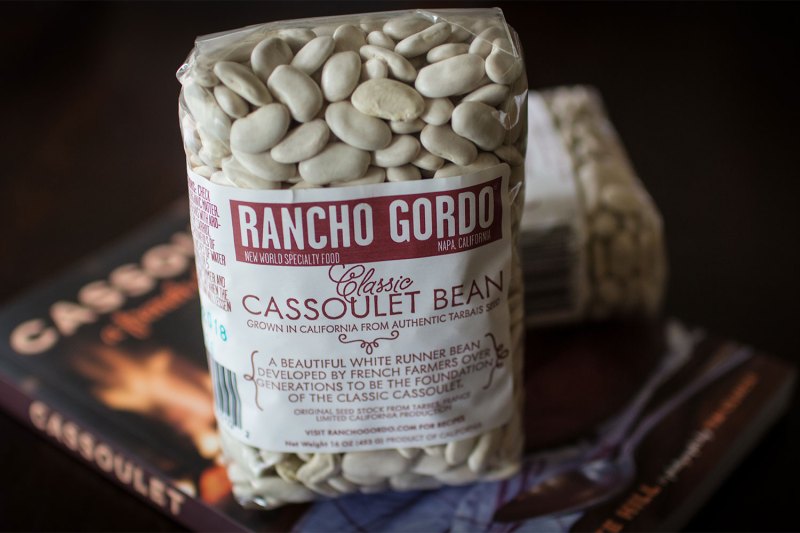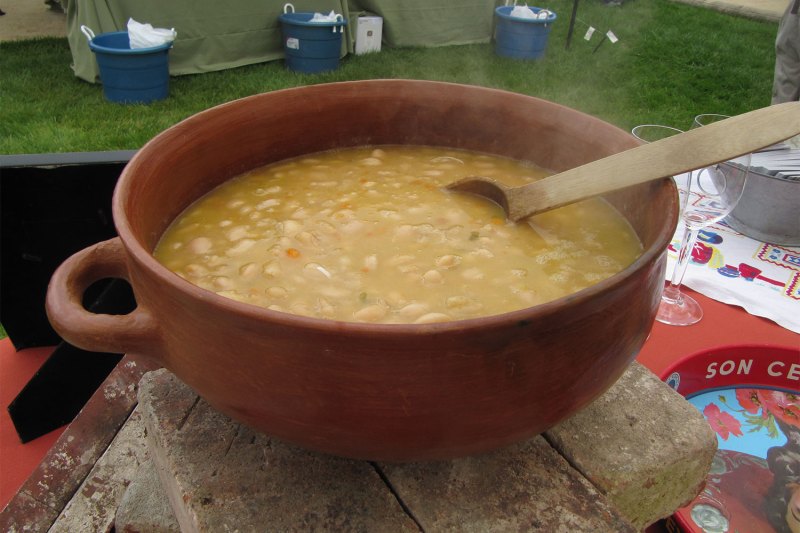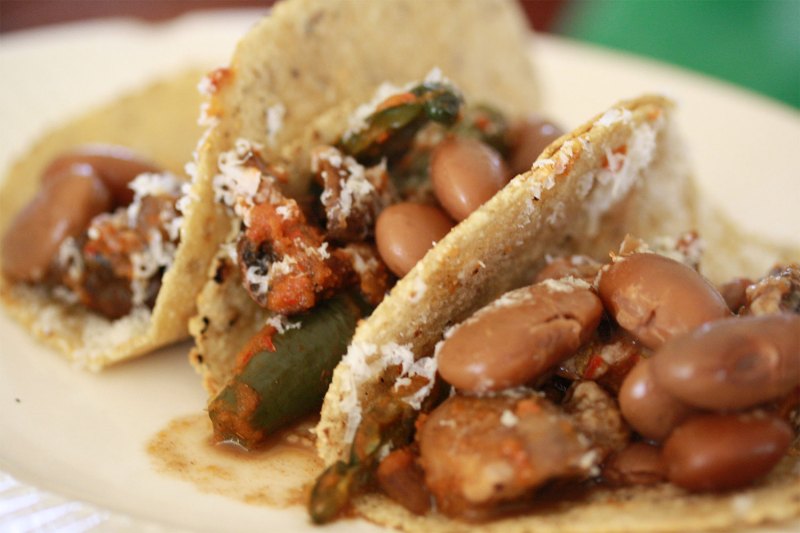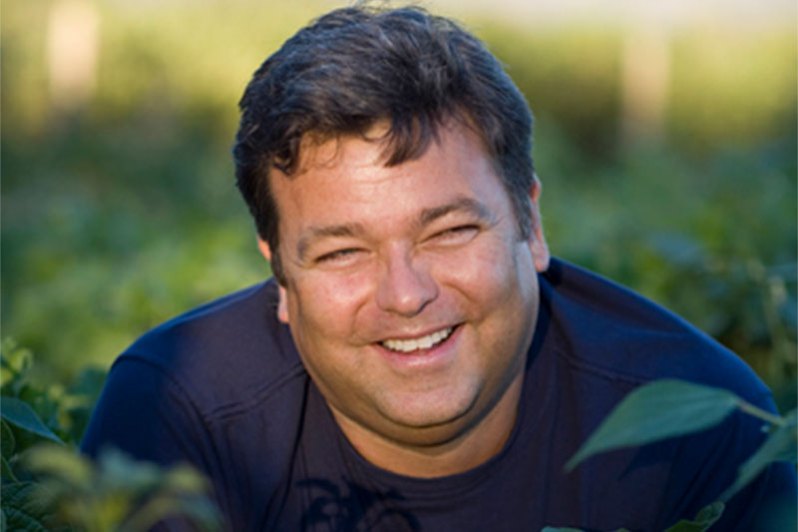From restaurants to the dining room table, beans are finally having their moment in the sun. But it’s not just because the pandemic turned us all into bean-hoarders, stuffing our pantry shelves with giant bags of the stuff so we didn’t have to go to the store too often. There’s a renewed interest in beans, period. Long seen as a sideshow ingredient or only good for stews and recipes where everything but the bean added the flavor, beans are finally being embraced and celebrated in their own right, recognized for their individual flavor, texture, and even appearance.
And there’s one company that’s had a huge hand in that: .
Founded in 2001, this Napa Valley-based purveyor of New World specialty beans, as well as chiles, grains, herbs, and corn, is the brainchild of bona-fide legume-lover Steve Sando. After years of jumping between jobs and hopscotching all over the world, Sando settled in the Napa Valley in 2000, where he started a small garden growing produce and beans. Using seeds he found in catalogs, he quickly felt an affinity for growing heritage beans and started to sell at farmer’s markets. Fate came knocking when Thomas Keller, head chef of the renowned Napa Valley restaurant The French Laundry, discovered his beans and put them on the menu. From there, interest and demand snowballed, coming to a head recently at the start of the pandemic.

“It’s been nuts. We’re overwhelmed but we’re super happy,” says Sando. As a food business, Rancho Gordo was designated essential and permitted to continue operating during California’s period of shutdown. At the onset of the pandemic, sales more than quadrupled as people started stockpiling. Orders were delayed for weeks while the business tried to keep up with demand. This reporter would frequently check the website to find variety after variety consistently sold out. “We’ve already beat last year’s sales … it was like a tsunami.”
With the pandemic and current events throwing normal daily routines to the winds, many people are grappling for a handhold right now and looking to regain control. Sando says that cooking and working in the kitchen is one of the best places to find that sense of control, power, and fulfillment, by transforming something as small and simple as a bean into a thing of beauty and enriching flavor.
“People look at these beans and say ‘Wow, I turned this hard thing into something creamy and delicious.”
Beyond the taste and texture of Rancho Gordo’s beans, which Sando could wax poetic on for ages, one of the main draws is their look.
Most American consumers are used to dealing with a handful of staple varieties: pinto, red kidney, lentil, Great Northern, or black beans. Usually, we get them from the bulk bins at the supermarket, scooping them into flimsy plastic bags and relishing the delightful clatter they make falling together. The appearance of each type is pretty uniform and generally pretty ordinary.
But Rancho Gordo beans are vibrant, exciting, a treat for the eyes. Each variety, but especially the company’s famous heirlooms, are like paintings in miniature, with bright splashes, unique patterns, or solid block colors. They feature evocative, alluring names: Scarlet Runner, Midnight Black, Yellow Eye.

And once they’re actually cooked: oh, the rich flavors, the melt-in-your-mouth textures.
With farms in California, New Mexico, Oregon, and Washington, Rancho Gordo supplies everyone from home cooks to professional chefs with high-quality, common types of beans like garbanzos and pintos. But arguably the company’s most coveted varieties — and the bean of Sando’s eye, as it were — come from across the border in Mexico, where there’s an astonishing variety of rare heritage beans that have been grown by families and small farms for generations or even centuries.
“As I dug deeper, it was this whole world and I just got obsessed,” he says. “My idea of a good time is visiting the markets there [in Mexico], and I would find all these wonderful beans but I could never figure out a way to export them.”
This led him to start a partnership with a Mexican company called Xoxoc, run by Yunuen Carrillo Quiroz and Gabriel Cortés Garcia, and from that partnership, the Rancho Gordo-Xoxoc Project was born. For the past twelve years, it has been encouraging and supporting Mexican farmers (many of which are indigenous) to grow and sell these rare, indigenous beans that might otherwise be lost to history.
“We’re working together to help these farmers who really are in great peril because the market’s shrinking,” Sando explains.
Most farmers are steered toward growing more common, mass-market beans that will produce larger, more consistent yields to compete against big-bean suppliers like China, meaning that their harder-to-grow, native varieties are left in the dust. In taking a risk selling their heritage beans to Rancho Gordo, the farmers are rewarded with fair living wages, opportunities for growth, and a mutually fulfilling partnership with two supportive companies. It also helps preserve the diversity of regional bean varieties and culinary traditions.

“Usually, the farmers grow for themselves or for their local market, so it’s a leap of faith selling their beans to the project,” Sando says, noting that many of the farmers are both wary of outsider interest but also proud that they can share their history and culture. “It’s a validation of their food culture … there’s a level of pride.”
As the foreign outsider in the partnership, coming from the United States, Sando is very aware of his position and remains consistently open to learning more about Mexican culture and traditions, always being respectful and educating himself.
“I always feel that the more I go, the less I know,” Sando says. “I’m really conscious that I’m a guest whenever I’m in Mexico. I stay humble, my role there is definitely as a guest.”
Even though Rancho Gordo has been around and getting glowing press from the likes of the New York Times and other leading publications for nearly two decades, a 2018 New Yorker profile and the pandemic brought a large amount of first-timer interest and traffic their way. But they’ve been popular since long before COVID-19, especially in the food world and among “bean freaks” as Sando calls them.
And boy, can those bean freaks not get enough.
Among chefs, restaurateurs, food writers, and foodies, Rancho Gordo beans are a hot, coveted commodity. The company’s packaging — neat little bags with a red-and-white label and an image of a smirking woman, her tongue arched over her teeth, in the bottom right corner — is now iconic. There are thousands of posts on Instagram hashtagged #ranchogordo that show brothy soups, rich stews, and bean-strewn salads. Say that you are one of the 8,500 privileged few who annually receive six glorious pounds of beans and grains through the quarterly bean club, and you’re sure to receive looks of deep envy. (And good luck getting on that list; the waitlist for the club has another 12,500 names on it).
And the demand for these heirloom beans is truly insane. In addition to the huge jump in sales earlier this year, on Rancho Gordo’s online store, there’s a whole section marked “Waitlisted Beans” where you can select a sold-out type of bean and add your name to the waitlist for when it becomes available again; there are 16 kinds of beans listed.

For Sando, there’s still so much more out there to learn and discover. In addition to frequently traveling to Mexico to meet with the farmers he partners with, he also travels around other parts of Mexico and further abroad throughout the Americas in search of other rare bean varieties and regional herbs. Currently, he has his sights set on a Peruvian variety called Caballero.
“It should be dairy, it’s so creamy!” Sando enthuses, saying they’re working on finding a supplier. Once the pandemic dies down, he also hopes to explore Brazil more.
But Sando’s mission is not just to expose people to lesser-known varieties that they probably would never have had the chance to taste otherwise and reawaken them to all the heirloom culinary treasures of the New World. It’s also about encouraging people to take pride in their cooking and appreciate the thing of beauty that is a properly prepared bean.
“There’s a real feeling of accomplishment in cooking a pot of beans,” Sando says. “I think it’s great that so many people are learning to cook and enjoy beans and it’s making them happy.”
And, as if you needed any more proof of just how much Sando’s customers crave his beans, even during a pandemic they haven’t been deterred from purchasing a particular hefty, white variety which originally hails from Oaxaca. The name of this bean? The Royal Corona. Think people would shy away because of the name? Nope, those have sold out, and, funnily enough, are Rancho Gordo’s top seller.
“People went crazy for it,” Sando chuckles.



